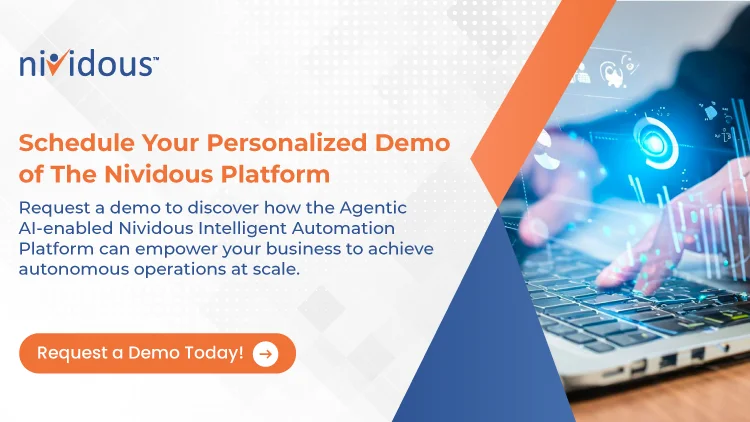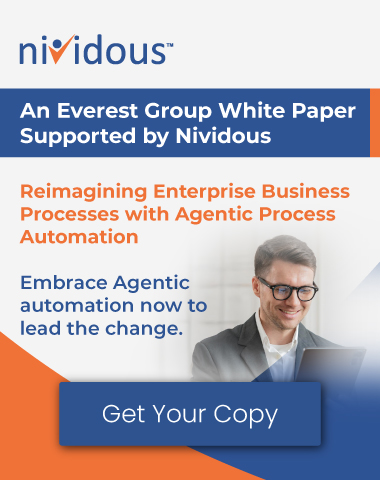The future of work is already reshaping workflows. Businesses that cling to rigid systems and static automation will struggle to keep up. Traditional workflow tools can help structure repeatable tasks, but they are rarely equipped to handle the unpredictability, scale, and complexity of modern enterprise operations.
Agentic AI is a new class of artificial intelligence transforming workflows by injecting autonomy, adaptability, and intelligence directly into core business processes. Agentic AI workflows empower systems to pursue goals, learn from feedback, and optimize performance in real time.
Let’s explore how these workflows work, why they matter, and what your organization can do to harness their potential.
Why Traditional Workflows Fall Short
Most business workflows rely on conditional logic, static scripts, or narrowly defined automation. They can execute tasks quickly but only within fixed parameters. When exceptions arise or goals evolve, these systems stall, forcing human teams to intervene. This creates inefficiencies such as:
- Repetitive manual oversight
- Delays from fragmented systems
- Errors due to a lack of context or real-time data
- Limited scalability
These inefficiencies can become a bottleneck for organizations facing rapid growth, shifting regulations, or global operations. Workflow automation needs to evolve from routine task handling to intelligent, goal-oriented execution, and that’s where Agentic AI workflows deliver a strategic advantage.
From Static Scripts to Intelligent Agentic AI Workflows
Agentic AI workflows transform traditional automation by introducing autonomy and purpose. Rather than reacting to triggers or following a checklist, Agentic AI agents operate with an understanding of goals, context, and dynamic environments.
Traditional workflows depend on hardcoded triggers and if-then rules. When processes deviate even slightly from the expected, progress halts and handoffs multiply. Agentic AI changes that model entirely.
These agents can:
- Break down objectives into multi-step tasks
- Adapt execution based on real-time input
- Collaborate across systems and departments
- Reassess decisions based on feedback or new data
Workflows become self-steering. Instead of simply processing requests, Agentic AI tools anticipate needs, adjust priorities, and pursue optimal outcomes with minimal oversight.
This new model elevates automation from task execution to intelligent orchestration.
Benefits Beyond Automation: Decision Intelligence at Scale
Agentic AI workflows go further than automating tasks. They enable real-time, judgment-based decision-making that supports strategic growth.
Key benefits include:
- Reduced Manual Labor: Eliminate repetitive decisions and data handoffs
- Faster Response Times: Real-time decision-making accelerates execution
- Improved Consistency: Rules and logic are applied uniformly
- Greater Agility: Workflows can adapt to change without rewrites
- Scalability: More processes can be handled with fewer resources
Agentic AI delivers intelligence that evolves with your business.
Ready to see what agentic automation can do for your business?
Download agentic process automation white paper, and explore how autonomous agents are revolutionizing process automation.
Starting With High-Impact, Low-Risk Workflows
Agentic AI works best when deployed in areas that combine structure with scale. Ideal entry points include:
- Claims processing, where agents can verify data, trigger validations, and push approvals across systems.
- Customer onboarding, where tasks like identity checks, account setup, and compliance documentation can be orchestrated end-to-end.
- Employee helpdesk workflows, where intelligent routing, FAQ resolution, and escalation handling reduce response times.
These functions often suffer from bottlenecks but are low-risk and rules-driven, making them excellent candidates for early Agentic AI adoption.
How Workflows Evolve With Agentic AI
Agentic AI solutions are no longer conceptual. They are actively transforming enterprise workflows across industries where speed, accuracy, and adaptability are mission-critical. From patient care to supply chain efficiency, these systems are elevating how businesses operate, solve problems, and serve customers.
Elevating Patient Care With Autonomous Coordination
In healthcare, agentic AI workflows are redefining care coordination. Before agentic AI, care coordination often relied on siloed tools, manual chart reviews, and fragmented communication across departments.
An autonomous agent can analyze unstructured clinical notes, extract relevant symptoms, match them with diagnostic guidelines, and recommend next steps. It can also flag potential gaps in the patient’s history. Once the course of action is determined, the agent can initiate insurance authorizations, schedule appointments with in-network specialists, and follow up with reminders or documentation updates. Because the system aligns actions with HIPAA and organizational policies, it reduces administrative burdens while improving patient experience and medical accuracy.
Transforming Finance Through Real-Time Intelligence
Finance teams are tapping into Agentic AI to monitor and respond to risk in real time. An agent embedded in expense management can flag out-of-policy purchases, request missing receipts, and reconcile discrepancies by pulling historical data from ERP systems. Beyond anomaly detection, it can pre-populate financial dashboards, adjust forecasting models, and even surface recommendations to improve working capital. All of this occurs without needing daily inputs from staff, freeing finance professionals to focus on strategic decisions rather than repetitive validations.
Reinventing Logistics With Predictive Agility
In logistics and supply chain management, agentic AI workflows allow businesses to respond instantly to operational disruptions. Traditionally, delays in logistics required human review of reports, system alerts, and emails before adjustments could be made, causing missed windows and SLA failures.
An intelligent agent can monitor live GPS, weather feeds, and inventory levels, dynamically reassign routes or carriers, and notify stakeholders before delays impact SLAs. Over time, these agents can also learn which vendors or routes are most efficient under certain conditions to improve future planning. By automating both the reaction and the refinement, logistics operations become more predictive, adaptive, and resilient.
Nividous offers a unified platform that merges agentic AI, RPA, generative AI, and low-code tools into one powerful solution. Whether you’re optimizing claims processing, streamlining customer onboarding, or reducing operational cycle times, our platform gives you the intelligence and adaptability to deliver better results at scale.
The Role of Agentic AI Tools in Workflow Design
Agentic AI tools are the foundation for modern, adaptable workflows. They empower organizations to move beyond rigid automation by directly embedding logic, learning, and foresight into operational processes. Rather than relying on predefined sequences or static triggers, these tools allow systems to reason through decisions, adjust in real time, and interact intelligently with both data and people.
At the heart of these capabilities is a tightly integrated suite of technologies that enhance human problem-solving at scale. Each element plays a critical role in shaping workflows that are faster, more accurate, and resilient to change. Let’s take a closer look at what makes agentic AI tools uniquely transformative:
Planning Engines: Breaking Down Complexity
Planning engines allow agentic AI systems to analyze goals and convert them into executable actions. These engines interpret the task by mapping the most efficient path, accounting for dependencies, and reallocating steps if priorities shift. They serve as the executive brain of the workflow, turning broad objectives into step-by-step plans tailored to the current business context.
Context Awareness: Adapting to Real-Time Variables
Agentic AI tools are contextually aware, operating using signals from real-time data. They continuously ingest internal system signals (like ERP, CRM, or ticketing platforms) and external sources (like weather, market conditions, or compliance updates). This context enables them to modify workflows on the fly by rerouting tasks, escalating issues, or adjusting timelines so the organization remains agile in the face of change.
Memory Modules: Learning From Experience
Agentic AI platforms feature memory modules that retain insights from past executions. These systems can detect patterns, compare past and current outcomes, and improve their responses over time. If a specific approach consistently results in delays or errors, the AI can shift strategies and apply that learning to future workflows without needing manual reprogramming.
Communication Interfaces: Collaborating Across Systems and Teams
Agentic AI works through communication interfaces that enable seamless collaboration between agents, humans, and digital systems. Whether it’s updating a human supervisor via chat, triggering an approval in a workflow engine, or syncing with external APIs, these interfaces ensure that information flows freely and actions remain aligned. This interconnectedness helps prevent silos and simplifies coordination across departments.
Agentic AI platforms stand out for their ability to understand goals, interpret intent, and act autonomously even when conditions change. They elevate workflows from predictable chains of tasks to dynamic ecosystems of intelligence. Outcomes improve continuously while operational overhead remains under control.
Implementing these advanced tools helps organizations design workflows that increase insight instead of effort. The result is a smarter, more adaptive operation built for constant evolution.
How To Adopt Agentic AI Platforms at Scale
Scaling agentic AI workflows begins with identifying high-impact, decision-heavy processes. Look for areas where manual input slows progress or where rules-based automation falls short.
Next, design workflows that:
- Focus on outcomes rather than tasks
- Account for variability and edge cases
- Enable agents to learn from execution
- Allow for human-in-the-loop where needed
Successful adoption also requires strong change management. Teams should be trained to work alongside agents and understand how to partner with them effectively. Clear governance, transparent decision logs, and role accountability are essential for trust and compliance.
Agentic AI platforms like Nividous simplify this process with prebuilt frameworks, robust governance controls, and out-of-the-box integrations.
Redefine Your Workflows With Nividous
Nividous believes automation should do more than execute. It should think, learn, and lead. That’s why we built our platform to support the full power of agentic AI workflows , combining reasoning, autonomy, and human collaboration in a single system.
Our platform integrates Agentic AI, RPA, low-code, and generative AI capabilities into one secure, scalable solution. It’s built to help you work smarter at every level.
Let’s reimagine what your workflows can achieve with less manual effort, faster results, and better business outcomes.
Start your journey with Nividous today.






